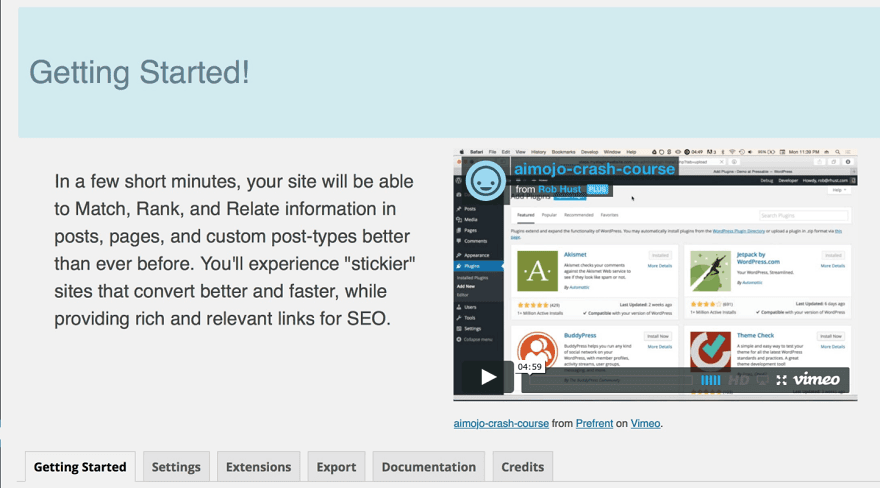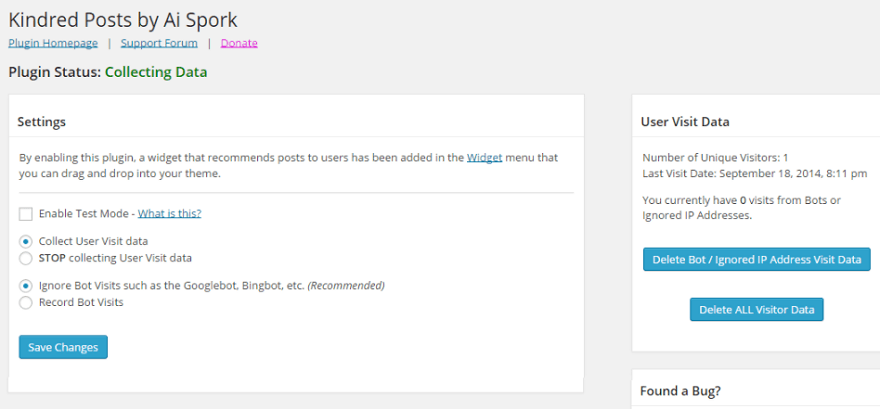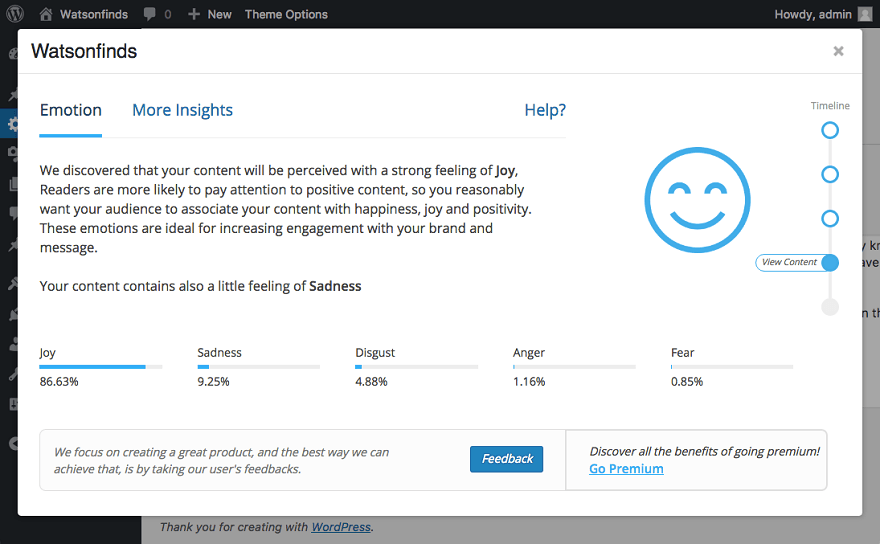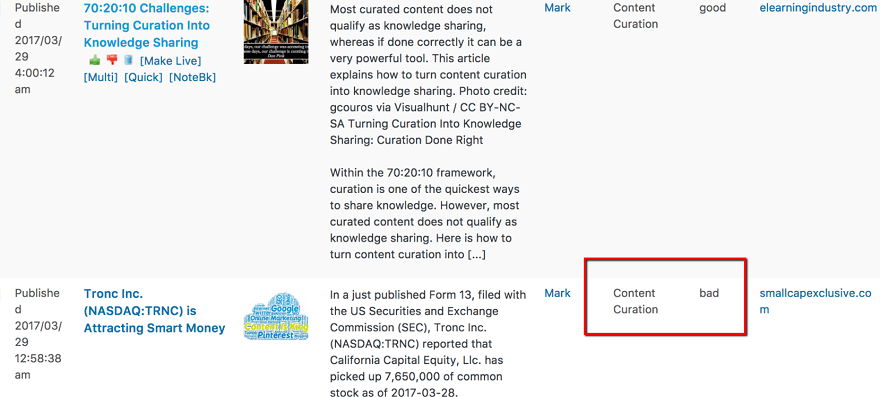This post is by Colin
Humans have always had a fascination with artificial intelligence. We write books and produce countless movies about robots taking over the world. But have you noticed that you never see books and movies about this far more insidious possibility?
Machines taking over web design and content creation and putting us all out of a job!
Is that actually a possibility? And should we fear for our jobs?
Well, I don’t think we need to find a new line of work quite yet. But there are some fascinating forays into using artificial intelligence and machine learning to power web design and content creation. And in this post, I’m going to dig into those possibilities and show you some of the tools that already exist.
At least for now, those forays are all about making your life easier, not replacing your job. But who knows where the field advances down the line!
In this post, I’ll give you a quick intro to artificial intelligence and machine learning. Then, I’ll get into some of the WordPress plugins and design tools that are using artificial intelligence to improve our favorite CMS.
What Are Artificial Intelligence and Machine Learning?
From a high level, artificial intelligence is a fairly simple concept. It’s just the idea of a machine that can complete tasks in a “smart” way. That is, it’s a computer system that can handle a task which previously would have required a human.
Machine learning, on the other hand, is a subset of artificial intelligence where machines “learn” as they’re exposed to new data. While it’s not the only example of artificial intelligence, machine learning is one of the hottest approaches right now.
Whereas a traditional approach might involve programming a set of “rules” that the machine always follows, machine learning uses algorithms that allow machines to “learn on the go”, so to speak. And that’s what makes machine learning so interesting.
A machine can run through tens of millions of images and learn from them. A human? Not so much.
What Can AI and Machine Learning Do Now Or in the Near Future?
In this section, I’m going to cover some of the tools and plugins that either already exist, or will soon exist (that is – real products that are in the pipeline).
To make it easy to find platform-specific tools, I’m going to divide this section into two parts:
- WordPress plugins that rely on AI
- External design or content tools that use AI
WordPress Plugins Using Artificial Intelligence and Machine Learning
Artificial intelligence in plugins is still a relatively new industry. We’re starting to see these plugins pop up more and more. But so far, their usage is not widespread and the applications are limited. Still, there are some intriguing options you can consider for your designs right now.
Just be aware – these plugins are all fairly new. That is, they don’t have the long history and community of more popular plugins. So be careful about relying on them too heavily (yet!).
All of these use core WordPress functions so they should work whether you’re using Divi or any other theme.
1. Aimojo

Aimojo is one of the best examples of the marriage of artificial intelligence and WordPress plugins (and it comes from Prefrent, a company who uses Divi for their site!).
This tool adds machine learning taxonomies to your WordPress content that allows Aimojo to better organize your content. The results? Improved search results and truly contextual menus.
Basically, it’s using machine learning to improve the relevance and usability of the different content pieces on your site.
While Aimojo has a low active install rate, as far as I can tell it’s still an active project.
2. Kindred Posts

Kindred Posts is another plugin that uses artificial intelligence to improve the navigation on your site.
It gives you a widget that displays recommended posts. Okay, a recommended posts widget…what’s unique about that?
Well, it’s not just some static thing. Kindred Posts uses artificial intelligence to “learn how your website visitors use your site and recommend content based on their interests”.
Again, it’s not super popular. But it’s another method of improving the usability and navigation of WordPress through artificial intelligence.
3. Watsonfinds

Watsonfinds is an innovative new plugin to help you improve the actual content on your site. It works by running your text through IBM Watson to gauge its likely emotional response in readers.
Through artificial intelligence, Watsonfinds can tell you if your content is likely to make readers experience:
- Joy
- Sadness
- Anger
- Disgust
- Fear
By applying these insights, you can modify your text to get the emotional response you’d like (at least in theory!)
4. MyCurator

If you need to pull in curated content to a WordPress site, MyCurator offers a better approach to pulling in external feeds by applying some artificial intelligence to classifying content.
After you give it some training, MyCurator’s Cloud AI module can go through a feed of articles and classify them based on their relevance to your specific WordPress site.
It’s like a mini, WordPress-specific version of Facebook’s machine learning news feed!
Design or Content Tools Using Artificial Intelligence and Machine Learning
These aren’t WordPress plugins, but they are tools based on artificial intelligence which might help you create better websites.
1. Colormind
Colormind is a color scheme generator for designers. That’s not the interesting part. This is:
Colormind uses deep learning and artificial intelligence to “learn color styles from photographs, movies, and popular art.” Yes, Colormind is actually using the works created by popular artists to help you generate successful color schemes for your designs.
2. Adobe Sensei
Sensei is Adobe’s foray into the world of machine learning and web design. Unlike the other options, it’s actually more of a set of technologies than a specific tool.
That is, Adobe seems to be taking pieces of Sensei and integrating it into their various other tools. Adobe Sensei can help with everything from automatically making your selfies less embarrassing to suggesting specific messages that will resonate with your audience.
Given that many web designers are probably already using Adobe Creative Cloud, the potential productivity improvements that Sensei can offer should be cause for celebration.
Unfortunately, not all parts of Adobe Sensei are public yet. But Adobe has multiple product launches scheduled in 2017, so this technology is right there in terms of development.
Wrapping Up
When it comes to WordPress-specific web design, there’s nothing truly groundbreaking with artificial intelligence. There are some plugins which use artificial intelligence to improve user experience and personalization. But as a technology, WordPress and artificial intelligence haven’t truly gotten married…yet.
But artificial intelligence and machine learning still aren’t widespread outside the tech giants. As these technologies become more commonplace, I hope (and believe) that we will get more helpful and novel applications in the near future.
Now over to you – do you have any ideas for how WordPress and artificial intelligence can come together to make our lives easier?
Article thumbnail image by Aniwhite / shutterstock.com









Hi,
There is a great insight in this article. Can you put more light on the topics like how webdesign will be personalized ( look and feel as well as content) based on the visitor’s browsing habits ?
Once again thanks for practical information.
Regards
Thanks for your insights. Very interesting. I’ll try a couple of these.
I have tried Kindred Posts plugin, and it´s works completely as it should.
I never get colors just right. Colormind looks good and Ièll be looking into it more. Kindred Posts and Mycurator are also on my todo list as a result.
Jan
It was interested, thanks for your article.
I tried Aimojo while reading this, by now it has 40 active downloads it seems cool but not so useful for my websites.
good luck
Love your post
Very interesting stuff! I am using an AI testing service to figure out the best theme/layout for my sites right now. It tests a bunch of different themes to see which creates the best user experience metrics such as time on site, bounce rate and page views per visit. It automatically “learns” which are the best and does so indefinitely. It’s pretty cool!
Thanks for your insights. Very interesting. I’ll try a couple of these.
Great post 🙂 Think I’am going to give “Kindred Posts” plugin a shot 🙂